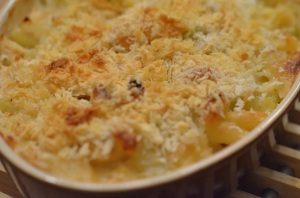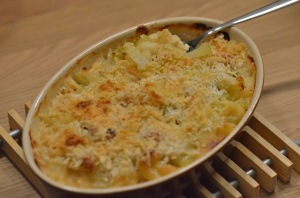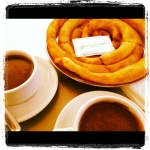Yes, I have a thing for Kohlrabi at the moment. I get nervous when I don’t have a bulb lying around. And I’m constantly trying to find new recipes to use them in. But more on that later.
This autumn, I’ve discovered, to my own surprise, that I prefer autumn and winter vegetables to summer vegetables (tomatoes probably being the only exception). The variety is huge, the flavors and colors are so inspiring and exciting. For a long time, at least here, the typically Mediterranean vegetables, like aubergine and zucchini, have been The Thing to cook with as they’ve been promoted as part of a light and healthy cuisine. And a lot of people, including me, have been using them throughout the seasons in their cooking, which left little space for the local seasonal produce, like all sorts of cabbage, turnips, beets, parsnips, Jerusalem artichokes, squash, kohlrabi and all the other beauties that are so abundant here in autumn and winter.
A lot of magazines, cookbooks, and of course blogs, now feature recipes with these beautiful vegetables and this, combined with my efforts to buy and cook local and seasonal, have thankfully made me (re)discover these flavors.
Now back to the Kohlrabi. I really wanted to use it in a quiche or tart, but while browsing the internet, I couldn’t find any recipes that sounded particularly appealing (at least they didn’t address the particular craving for something hearty and rustic I had at that moment). So I came up with this recipe that I based on the two main ingredients I wanted to use, kohlrabi and minced meat. The rest of the recipe came together as I worked. I’ve now made it several times and had the opportunity to twist around a few things. For example, I found that it worked even better with a high edge crust than with a typical tart crust as the filling turns out even more juicy. The dimensions I used in the quiche as photographed are a ø 22 cm tin with an approximately 4 cm high edge. But you could of course make it with a larger crust in diameter and a lower edge.

Ingredients:
– 1 ready-to-use or homemade crust (yes, I’ll have to post my homemade recipe one day but the problem is I keep trying different recipes and I haven’t really found a favorite yet, so I’ll keep trying for a while)
– 2 tsp olive oil
– 350g minced beef
– 1 medium sized onion, chopped
– 1 clove of garlic
– 1 large Kohlrabi (or two small ones), cut into cubes
– 1 large carrot, sliced
– 200ml beef stock
– 3-4 sprigs of fresh parsley
– 2 tsp chopped fresh chives
– 3 eggs (preferably organic)
– 3 tbsp cream cheese (Philadelphia style)
– 100ml single cream
– 250ml full fat milk
– 2 tbsp parmesan
– 1 tsp cumin
– 1 tsp grated nutmeg
– freshly ground salt and pepper to taste
Directions:
Preheat the oven to 180°C.
Carefully place the crust in your baking tin. Cover the crust with baking paper and dry beans or baking weights and blind bake for 15 minutes.
In the meantime, heat the olive oil in a frying pan over high heat. Add the minced beef and brown it, stirring frequently until it’s cooked and evenly browned. Reduce the heat to medium. Add the onion and fry until translucent. Add the garlic, kohlrabi and carrot and fry for two minutes, stirring from time to time. Add the beef stock, cover the pan and simmer for about 20 minutes or until the kohlrabi has softened and the liquid is absorbed. Add the cumin and adjust the seasoning with salt and pepper if necessary.
By now, the crust should be ready to come out of the oven. Discard the beans and baking paper and set the crust aside until the filling is ready. While the mixture simmers on the stove, break the eggs into a bowl, add the cream cheese, cream and milk. Season with the grated nutmeg, salt and pepper. Whisk until everything is well combined and the mixture is showing some bubbles on the surface.
As soon as the Kohlrabi-minced beef is ready, evenly spread it over the crust and pour the egg-cream mixture into the tin. Sprinkle with parmesan, push into the oven and bake for 30-40 minutes. The top should be golden and the tip of a knife should come out of the quiche more or less clean.
Take the quiche out of the oven and let it rest for 5 minutes before taking it out of the tin. Serve with a green salad and enjoy!



















